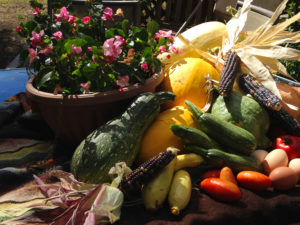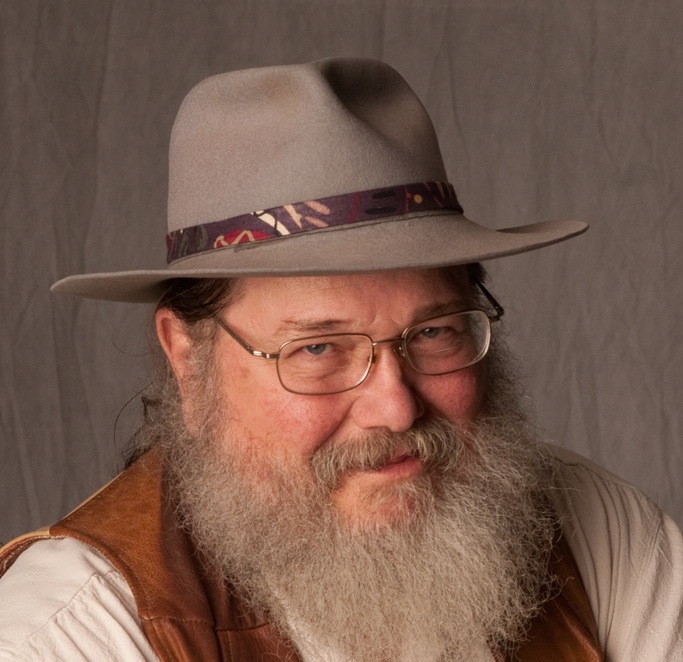“Will the circle be unbroken/By and by, Lord, by and by/There’s a better home awaiting/In the sky Lord, in the sky.”
— Lyrics from “Will the Circle Be Unbroken”, as performed by Johnny Cash
 Dark, rain-laden clouds boil up from the southeast horizon and roll overhead. The air is scented with pine and sage. Autumn temperatures have staked their claim on the landscape. The sumac has turned a dark scarlet which is almost black. A few snapdragons and the dahlias burn with color in the midst of browning weeds. The scratchy triangular leaves of the buffalo gourd vine in the yard are blighted—they look like wadded tags of old newspaper. Apple trees are heavily laden with fruit across the northland and peach trees support fat globes of fragrant sweetness.
Dark, rain-laden clouds boil up from the southeast horizon and roll overhead. The air is scented with pine and sage. Autumn temperatures have staked their claim on the landscape. The sumac has turned a dark scarlet which is almost black. A few snapdragons and the dahlias burn with color in the midst of browning weeds. The scratchy triangular leaves of the buffalo gourd vine in the yard are blighted—they look like wadded tags of old newspaper. Apple trees are heavily laden with fruit across the northland and peach trees support fat globes of fragrant sweetness.
The mild evenings have been perfect to sit in the yard and play music with friends and visit while a wheat-colored light drips from everything and the clouds turn to rose. Autumn is a bitter-sweet time for me. The looping circle of time is clearly displayed in the cycle of death and rebirth of all living things around me. The color wheel of plants spins from green to red to brown and then back to green once more. I don’t know if it’s the racial memory of anticipating winter’s cold or the anxiety I experienced as a child when I realized the long summer was over and I must return to school, but the beauty of the season is tempered by a profound unease. For my wife it is the season of the harvest.
Sue has been gardening for almost 50 years. She loves the cycle of selecting seed in the dead of winter, starting seedlings during the tempestuous days of spring and preparing the soil to receive them. Then she daily weeds, cultivates and fertilizes her charges through the long hot days of summer. Now with fall comes the harvest. She has been canning and freezing for weeks. The shelves under the stairs are packed with jars of pickles, green beans, applesauce, tomatoes and peppers. Sweet corn and peaches fill a shelf in the freezer and winter squash and pumpkins are laid away in the basement. She compares this season’s yield with past years. She regrets planting the corn late and utters curses against the gopher tribe. She covers her raised beds to give the tomatoes a few more weeks of growth. Soon she will turn the chickens into the garden for the winter to glean seeds and insects.
It was at the commune where we met in the late ’60s that she discovered her love of gardening. She learned her skills under the gaze of some experienced old school organic farmers. Community members sweated side by side in the field and then sat together at the table to enjoy the bounty they had produced. We were a group assembled from many backgrounds, but we found common ground in shared labor. It was here I learned the power of music. We celebrated our successes and mourned our losses with songs. We blessed all of our activities with music. I carry the clear image of our little group gathered on the bridge in front of the old mill building on a crisp morning to see off a couple of our fellow communards who were embarking on a cross-country hitchhiking trip. We scuffed the dead leaves with our feet and listened to the water in the millrace. We linked arms and sang “Will the Circle Be Unbroken” while a flock of starlings scolded from the treetops above.
Recently, at a friend’s request, Sue and I spoke to a class at Northern Arizona University that was studying the link between community and gardening. Sue talked about her passion for growing things and gave out samples of her garlic dill pickles. She observed that the planting of a garden is just the tip of the iceberg, the harvest is the thing. I talked about the role of music in our commune experience and how it helped knit the community together. I loved the fresh upturned faces of another generation of seekers of a simpler lifestyle. I judged their path a worthwhile one. I’ll see them in the circle.

